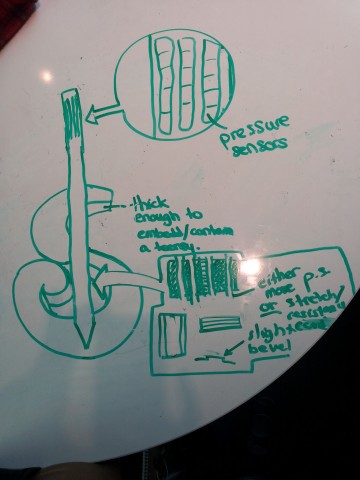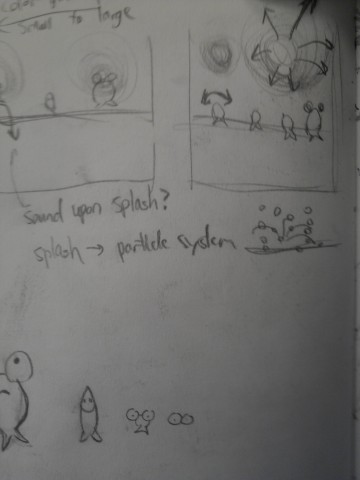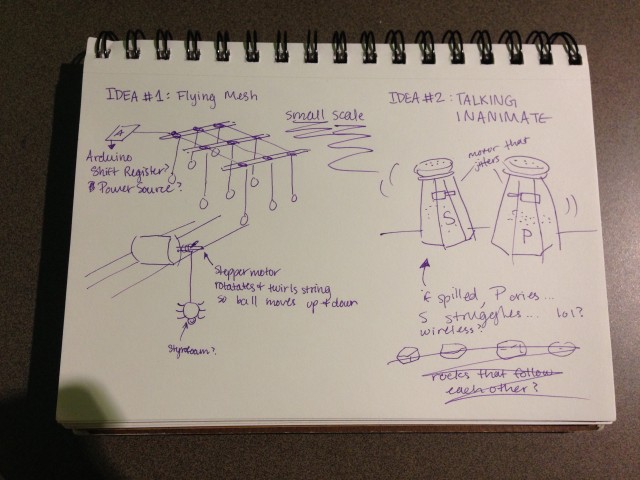Looking Outwards + Final Project Sketches
Looking Outwards:
1. The Kinetic Chandelier
I personally found this chandelier quite endearing; the way it follows you around reminds me of something that just wants a hug. In fact, I see this less as a chandelier and more of an ecosystem within and of itself. Arguably, this could belong underwater as well. This chandelier also boasts a utilitarian feature: the light is always pointing towards you, so say goodbye to shifting around awkwardly while reading, trying to catch the light!
2. D.O.R.T.H.E.
While this particular piece is also somewhat endearing, I like the idea behind the typewriter. If this were on a computer running a program in your background it would be less artistic but adhere more to the idea of one’s life having a soundtrack. (I always imagine mine does.) If my computer were able to sense and generate music based on my mood, I would be extremely impressed. Granted, the majority of the work done here is in the hardware which would be difficult to transfer to a computer, but it is possible to completely transfer the program to only software. I think I’m seeing a trope here — I like the idea of a machine being able to read one’s emotions. (Although perhaps not in the style of Marvin from the Hitchhiker’s Guide to the Galaxy). It really gives these machines a life force of their own.
3. Touch Vision Interface
Not a novel idea, I know. With that being said, the idea of being able to hide in a corner and control some piece if technology (in particular, with the goal of surprising someone — can you imagine an augmented haunted house with controls like these?) appeals to me. This kind of technology is already implemented in Razzy’s down on South Craig in a similar fashion — one choose what song to play over the speakers from from one’s own phone. A touch interface like this, however, gives that extra degree of control that makes the experience a little more special.
My Project Sketches/Ideas
1. An Electric Violin
This violin would be feature pressure pads on the neck where each of the four strings would normally be situated. I realize there should be a second set of pressure sensors just below the fingerboard to emulate a bow, but am at present unsure as to how these two would interact with one another. One thing is for sure: If I am to implement this project, I will have to switch to using a Teensy.
Violin body would have to be lasercut, and potentially layered (depending on the thickness the lasercutter can deal with). Fancy futuristic body shape. 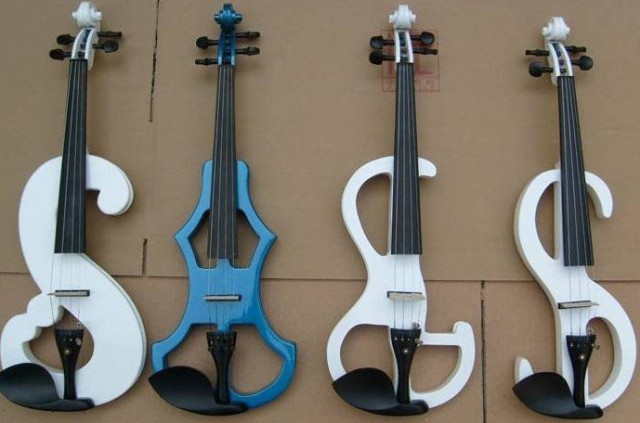
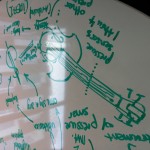
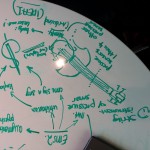
I think perhaps it would be more “realistic” to use the cord which changes resistances as it stretches. Granted, it would have to start off fairly taught. There also needs to be an output device somewhere.
Additionally, would it not be awesome to make the body/bow from acrylic and insert lights?
Second Idea Coming Soon!
I guess a second project (also music-related) would be to have a piano with pressure sensors under say, a certain octave of notes. When pressed, lights on the piano would light up in different ways.
